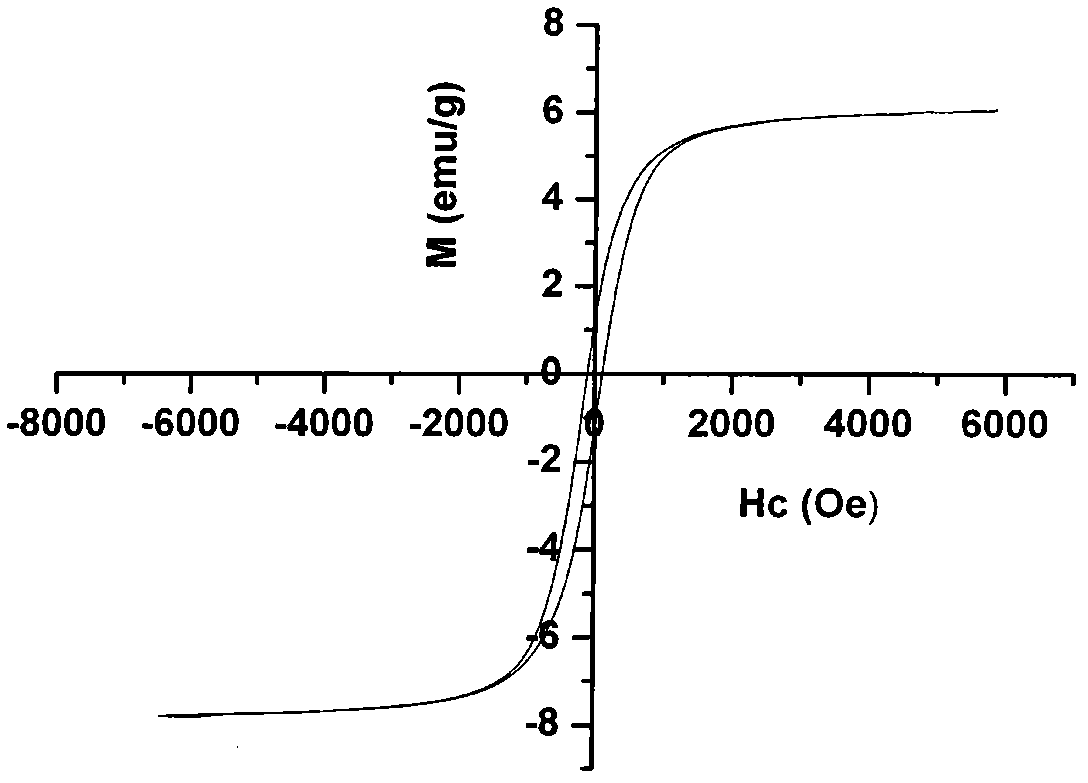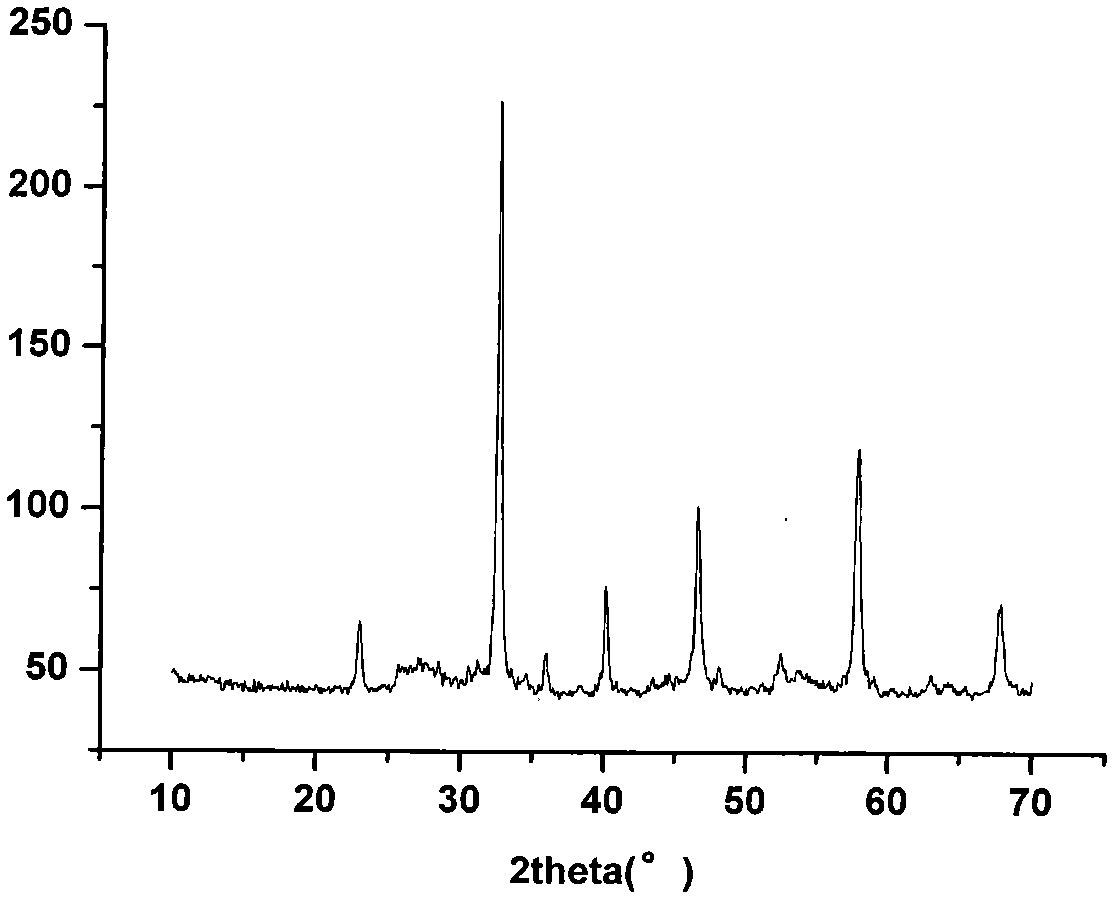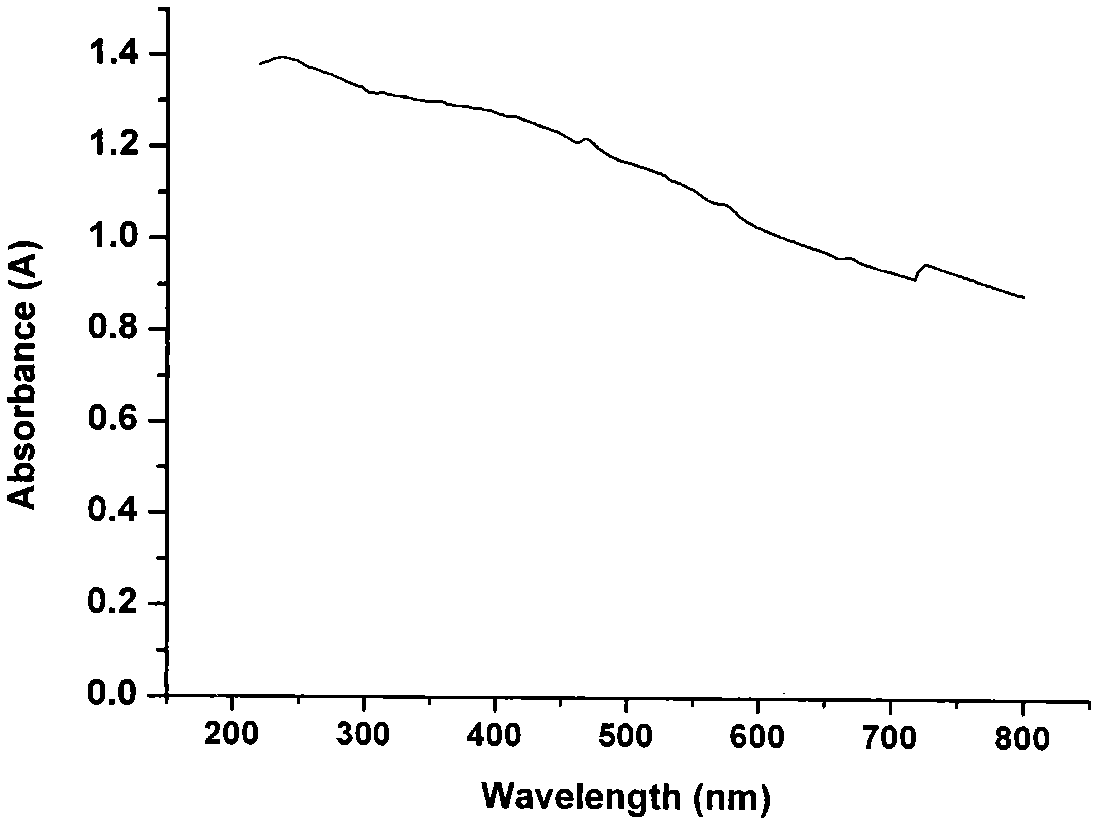Method for processing explosive wastewater
A technology for pyrotechnics and wastewater, which is applied in the field of pyrotechnics wastewater treatment, can solve the problems of inability to make full use of sunlight and the difficulty of separating suspended catalysts, and achieve good adsorption and photocatalytic degradation, small particle size distribution, and high saturation magnetic properties Effect
- Summary
- Abstract
- Description
- Claims
- Application Information
AI Technical Summary
Problems solved by technology
Method used
Image
Examples
Embodiment 1
[0021]Weigh a certain amount of lanthanum nitrate, cerium nitrate, manganese chloride, ferric nitrate and stearic acid respectively so that the molar ratio is 0.9:0.1:0.1:0.9:8. First, under the condition of constant temperature oil bath heating, stearic acid is melted, and under constant temperature magnetic stirring, lanthanum nitrate, cerium nitrate, manganese chloride, iron nitrate solids are melted into molten stearic acid, and the temperature is controlled at 123°C, and the reaction is sufficient Time to make it a stearic acid complex solution. Burn it at 500°C to obtain the precursor-mixed oxide, take out the burned product and grind it and put it in a muffle furnace, and calcinate it at 700°C for 2 hours to obtain La 0.9 Ce 0.1 mn 0.1 Fe 0.9 o 3-d powder, see the attached magnetic curve figure 1 .
Embodiment 2
[0023] Weigh a certain amount of lanthanum nitrate, cerium nitrate, manganese chloride, ferric nitrate and stearic acid respectively so that the molar ratio is 0.8:0.2:0.1:0.9:9. First, melt the stearic acid under constant temperature oil bath heating condition, and dissolve lanthanum nitrate, ferric nitrate, and manganese chloride solids in the molten stearic acid under constant temperature magnetic stirring, control the temperature at 121°C, and react for enough time to make it Become a stearic acid complex solution. Combust it at 500°C to obtain a mixed oxide, take out the burned product, grind it and put it in a muffle furnace, and calcinate it at 750°C for 2 hours to obtain La 0.8 Ce 0.2 mn 0.1 Fe 0.9 o 3-d Powder, its XRD diffraction pattern and UV-Vis diffuse reflectance curve are shown in the attached figure 2 And attached image 3 .
Embodiment 3
[0025] Weigh a certain amount of lanthanum nitrate, cerium nitrate, manganese chloride, ferric nitrate and stearic acid respectively so that the molar ratio is 0.7:0.3:0.1:0.9:10. First, melt stearic acid under constant temperature oil bath heating conditions, and dissolve lanthanum nitrate, ferric nitrate, cobalt nitrate, and manganese chloride solids in molten stearic acid under constant temperature magnetic stirring, and control the temperature at 124°C. The reaction is sufficient Time to make it a stearic acid complex solution. Make it burn at 500°C, take out the burned product, grind it and put it in a muffle furnace, and calcinate it at 750°C for 1 hour to get La 0.7 Ce 0.3 mn 0.1 Fe 0.9 o 3-d Powder.
[0026] (2) Examples of adsorption and photocatalytic degradation of pyrotechnic waste water
[0027] Example 1
PUM
 Login to View More
Login to View More Abstract
Description
Claims
Application Information
 Login to View More
Login to View More - R&D
- Intellectual Property
- Life Sciences
- Materials
- Tech Scout
- Unparalleled Data Quality
- Higher Quality Content
- 60% Fewer Hallucinations
Browse by: Latest US Patents, China's latest patents, Technical Efficacy Thesaurus, Application Domain, Technology Topic, Popular Technical Reports.
© 2025 PatSnap. All rights reserved.Legal|Privacy policy|Modern Slavery Act Transparency Statement|Sitemap|About US| Contact US: help@patsnap.com



